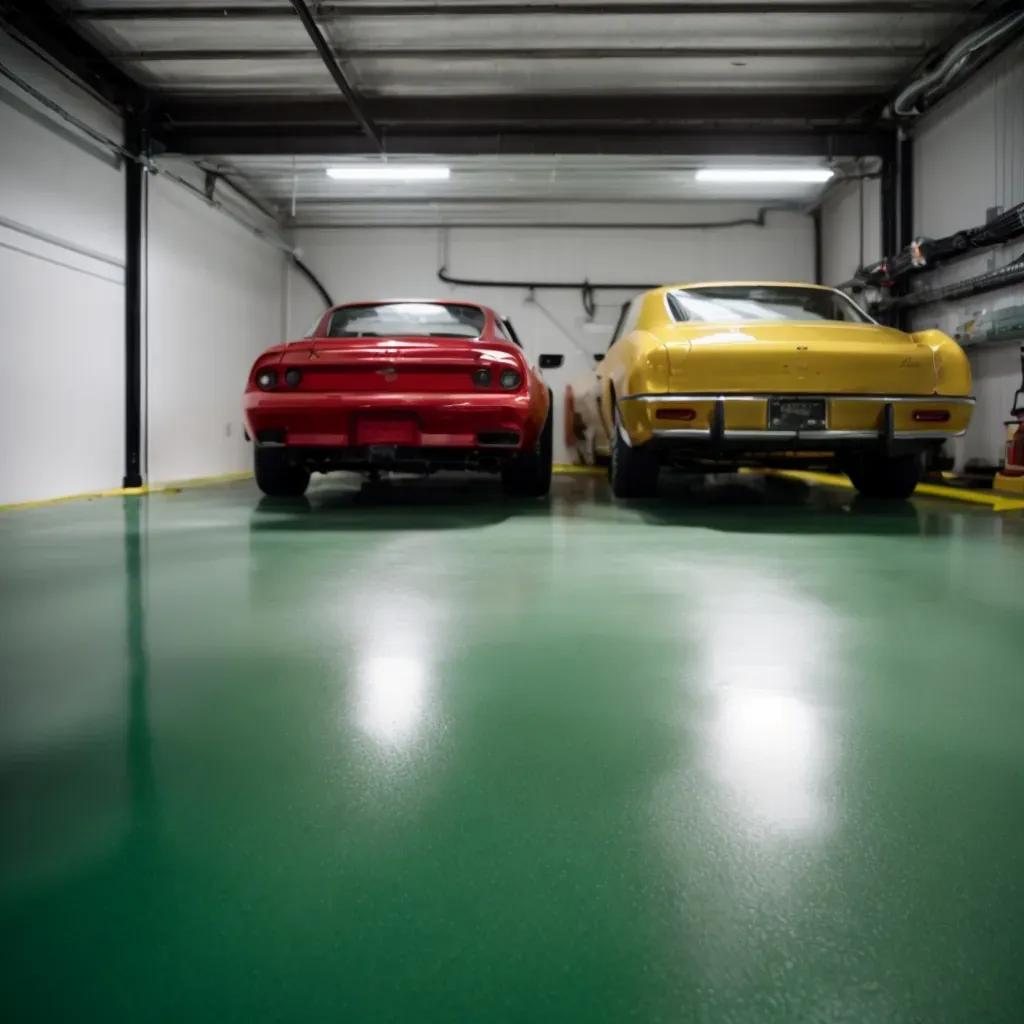Imagine walking into your garage and noticing a beautifully coated floor that not only looks stunning but also stands up to the daily wear and tear of your vehicles and activities.
When it comes to deciding between garage coating epoxy and polyaspartic floor paint, the choice can significantly impact the functionality and aesthetics of your space. By understanding the unique characteristics and benefits of each option, you can make an informed decision that suits your needs best.
Let’s explore the nuances of garage coatings to help you make the right choice for your garage floor.
Table of Contents
The Power Of Garage Coating Epoxy
When considering garage floor coatings, epoxy stands out for its exceptional durability, chemical resistance, and versatile design options. Epoxy not only provides a strong and durable surface for your garage floor but also offers protection against stains, impacts, and chemicals, making it a reliable choice for your space. The ability to resist oil, gasoline, and other common garage spills ensures that your floor stays looking fresh and clean for years to come.
In addition to its durability, epoxy floor coatings come in a variety of colors, patterns, and finishes, allowing you to personalize your garage to match your style and preferences. Whether you prefer a solid color, metallic finish, or decorative flakes, epoxy coatings offer endless design possibilities to make your garage uniquely yours. This versatility in design options allows you to create a space that not only functions well but also reflects your personality and interests.
While epoxy coatings have a slower curing time compared to polyaspartic floor paints, the wait is worth it for the long-lasting benefits it provides. By choosing epoxy for your garage floor, you’re investing in a high-quality coating that will protect your floor from daily wear and tear while enhancing the overall look and feel of your space.
Understanding Polyaspartic Floor Paint
Exploring the properties and benefits of polyaspartic floor paint provides insight into its fast-curing nature, scratch resistance, and potential cost advantages compared to epoxy coatings. Polyaspartic floor paint is renowned for its rapid cure time, allowing you to coat your garage floor and return to full use in just a fraction of the time compared to epoxy. This quick curing feature is particularly appealing for those seeking a fast and efficient solution that minimizes downtime.
Moreover, polyaspartic floor paint offers exceptional scratch resistance, ensuring that your garage floor maintains its pristine appearance even in high-traffic areas. The durability of polyaspartic coatings makes them a long-lasting choice for protecting your floor against wear and tear.
In terms of cost benefits, while polyaspartic floor paint may have a slightly higher upfront cost than epoxy coatings, its fast cure time can lead to savings in terms of labor and time. Additionally, the longevity and durability of polyaspartic coatings can result in fewer maintenance and recoating expenses over time, making it a cost-effective option in the long run.
Unveiling the key differences
Comparing the application process, drying time, and maintenance requirements of garage coating epoxy and polyaspartic floor paint reveals important distinctions between the two options. When it comes to application, epoxy typically requires a more meticulous process involving mixing resin and hardener before applying. On the other hand, polyaspartic floor paint is known for its faster application as it’s a single-component material that doesn’t need mixing.
In terms of drying time, epoxy coatings generally take longer to cure fully. This can range from 12 hours to several days, depending on the specific product and conditions. Polyaspartic floor paint, however, boasts a quicker drying time, often drying within a few hours and allowing for same-day use of the coated area.
Maintenance requirements also differ between the two options. Epoxy coatings are durable but may require periodic maintenance such as reapplication of a top coat to maintain their appearance and protection. Polyaspartic floor paint, known for its UV resistance and high durability, typically requires less maintenance over time.
Understanding these key differences in the application process, drying time, and maintenance requirements can help you make an informed decision when choosing between garage coating epoxy and polyaspartic floor paint for your space.
Conclusion
To make the best decision for your garage floor coating project, it’s crucial to understand the key differences between epoxy and polyaspartic options and how they align with your maintenance needs.
Epoxy coatings offer a durable and cost-effective solution that can withstand heavy use and provide a high-gloss finish. However, they may require more maintenance over time, such as periodic reapplication or touch-ups.
On the other hand, polyaspartic floor paint provides a fast-curing option that’s UV stable and more resistant to chemicals and abrasions. While polyaspartic coatings tend to be pricier upfront, they offer long-term benefits like easier maintenance and a quicker installation process.
Key Takeaways
– Garage Coating Epoxy offers exceptional durability and protection against stains, impacts, and chemicals.
– Polyaspartic Floor Paint provides exceptional scratch resistance and long-lasting protection in high-traffic areas.
– Garage Coating Epoxy may require more maintenance over time compared to the low-maintenance Polyaspartic Floor Paint.
– Polyaspartic Floor Paint offers fast curing, UV stability, and easier maintenance, making it a convenient and durable choice.

